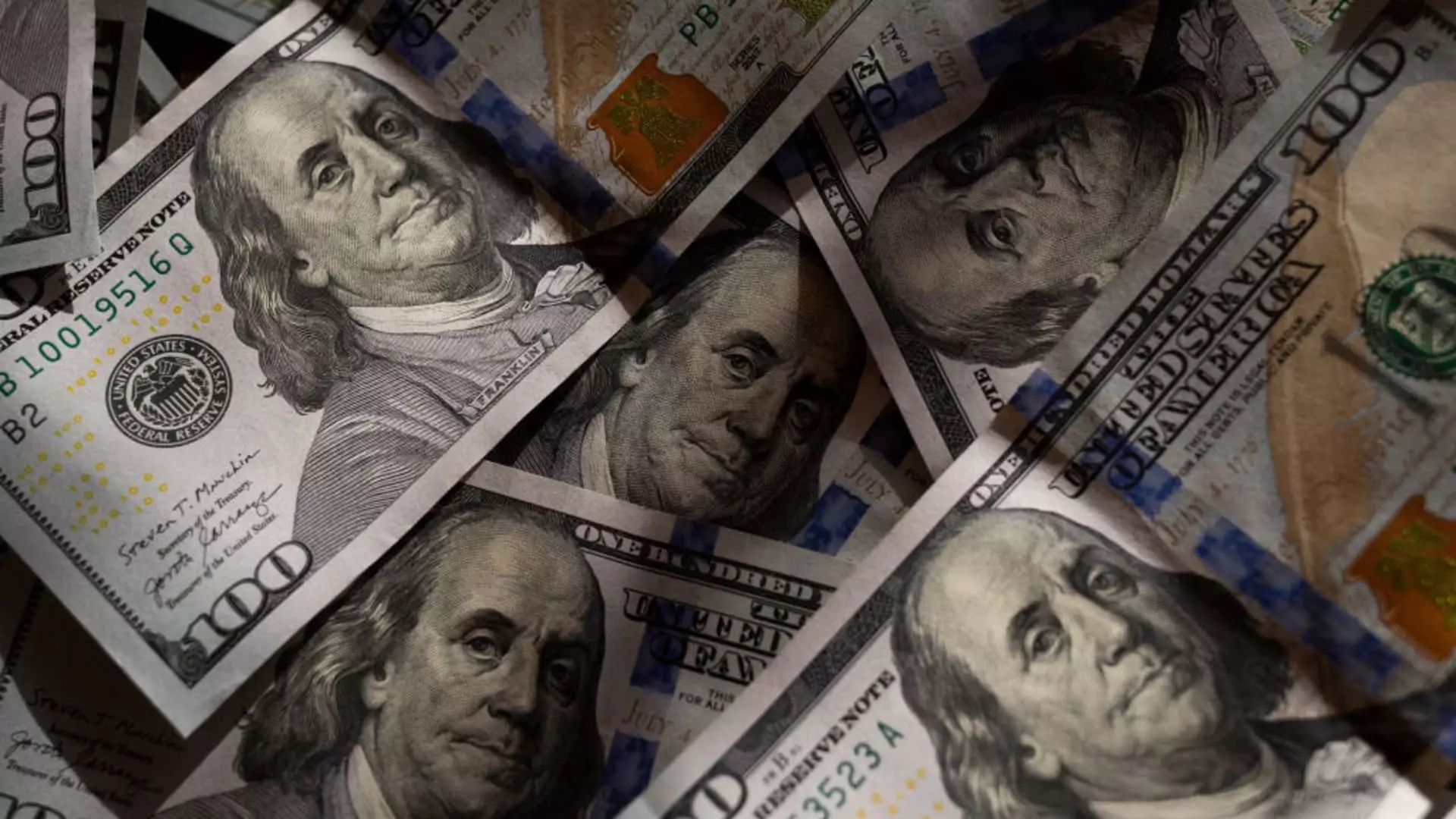The U.S. dollar, once a pillar of global economic strength, is currently facing a steep decline that has jolted markets and reshaped financial landscapes. With a drop exceeding 9% this year alone, the dollar’s instability is not merely a domestic issue; it reverberates across international borders, creating an environment rife with both opportunity and peril. The implications of this downturn are far-reaching, igniting discussions about currency valuation, economic policy, and the relative strengths of nations engaged in a complex and interconnected trade system.
The weakening of the dollar signals not just a loss of investor confidence but raises serious questions regarding U.S. policymaking and its future trajectory. In times of uncertainty, money tends to flee toward safety, and the fact that participants in Bank of America’s latest Global Fund Manager Survey expect further declines illustrates the depth of concern among major investors. Are we witnessing the unraveling of an economic powerhouse, or might this be the catalyst for much-needed reforms?
The Global Ripple Effect
As the dollar stumbles, other currencies rise, benefiting from the depreciation of this once-mighty greenback. Safe-haven currencies like the Japanese yen and the Swiss franc are experiencing remarkable appreciation against the dollar—gains of over 10% in mere months speak volumes about the shifting tides. The euro too has witnessed a renaissance, bolstering the currency’s importance on the international stage.
However, not all emerging market currencies share in this celebration. While the likes of the Polish zloty and Russian rouble enjoy a positve trajectory, currencies such as the Vietnamese dong and Indonesian rupiah suffer significantly. The stark contrast in currency performance exposes the vulnerabilities of nations whose economic health is tightly bound to the dollar’s fortunes. It raises critical questions: How will these nations adapt to a new reality that is dictated largely by the fluctuations of U.S. monetary policy?
The Double-Edged Sword of Depreciation
While some central banks may rejoice at a weaker dollar—seeing it as a potential alleviation of debt burdens and an opportunity to cut rates—the reality is far more complex. A declining dollar may indeed reduce import costs for many nations, potentially easing inflation pressures. Still, it risks compromising export competitiveness. Countries that depend on robust export sectors must now balance the benefits of decreased import prices against the threat of retaliatory tariffs from the U.S., a nation increasingly prone to isolationist policies.
The uneasy balance becomes starkly apparent in the Asian markets, where central banks must tread carefully. Currency devaluation becomes an active consideration, and therein lies the danger: if mismanaged, it could result in severe capital flight and economic instability. The stakes are incredibly high, as nations face the dual challenge of stimulating their economies without stoking the fires of inflation or retaliatory trade measures.
Central Banks and the Race Against Time
The decisions made by central banks during this tumultuous period could either fortify their economies or catalyze deeper crises. For some, a weaker dollar might stir the urge to cut rates, but others face the paralysis of indecision rooted in recent currency volatility. The example of Indonesia serves as a cautionary tale; its central bank may be loath to make drastic rate cuts despite the obvious pressures, illustrating how intertwined currency stability and monetary policy have become.
Moreover, as the European Central Bank adjusts its policies in response to falling inflation figures, questions linger about the long-term ramifications of momentary gains. The Swiss National Bank, in light of its historical battles with a strong currency, may feel the weight of its decisions in ways that go beyond mere financial metrics. The very existence of a strong local currency can diminish the competitive edge fundamental to export-driven economies, bringing with it the possibility of economic erosions.
A Path of Caution in Unpredictable Times
In our current geopolitical climate, marked by trade tensions and complex international relations, the act of currency devaluation carries significant risk. Nations that stray too far into the territory of aggressive monetary policy may evoke the wrath of their trading partners, potentially initiating a currency war with long-lasting ramifications on global stability. The notion that one nation could deliberately attempt to devalue its currency may invite accusations of manipulation, leading to retaliatory tariffs that could unravel years of economic progress.
For now, the focus remains not on how to weaken currencies, but on how to sustain them amidst a backdrop of uncertainty. Moving forward, nations must engage in a delicate dance—where trade negotiations and diplomatic relations will prove vital in shaping economic futures. The comprehensive syncing of international strategies may ultimately dictate the success or failure of currencies worldwide. The seeming paradox of current market dynamics speaks to a complex reality, urging caution and foresight while the world navigates uncharted economic waters.


Leave a Reply